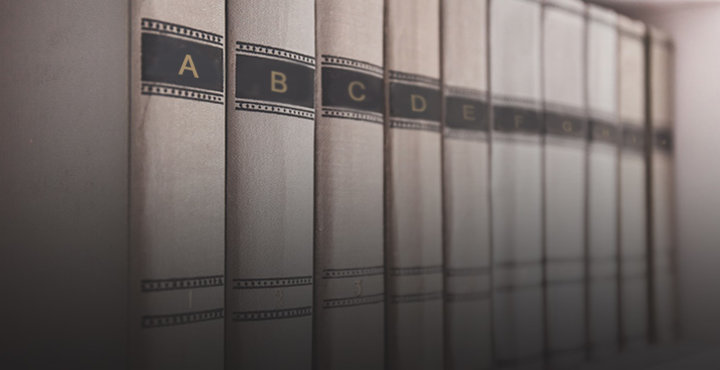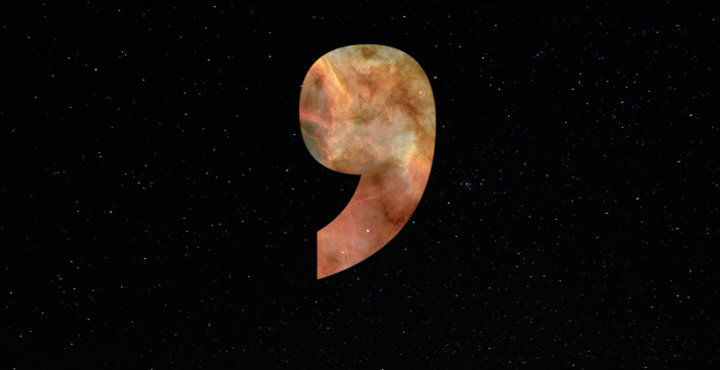Some common comma rules
You may ask, what is a comma? Well, a comma is the most important punctuation mark for ensuring clarity in a sentence. However, it is often incorrectly used, which can sometimes have comical results. Consider how the comma is used in the following sentence: I'd like to thank my parents, George Harrison and Big Bird. We know, or at least we think we know, what this person means to say: he is grateful to four people who have influenced his life (Mom, Dad, George Harrison, and Big Bird). But without a comma after George Harrison, the sentence actually communicates something else: the author's parents are George Harrison and Big Bird—a frightening prospect indeed!
Using commas correctly ensures that the reader understands the meaning the author intends to convey. There are a few strict comma rules concerning usage, but many of the conventions are merely typical practices. Exceptions exist, and authors should make the best decisions possible in the interest of clarity. Nonetheless, here are the most common comma rules:
Comma rule #1: Separating items in a series with a comma
Three or more items (single words or phrases) in a series should be separated by commas, including the final item, which comes after the conjunction (almost always and or or). This final comma is known as a serial comma. If the author of the example sentence above had used the serial comma, we wouldn't be suffering from an image of a bearded yellow bird playing a sitar. Consider the following example of a comma series:
I must remember to buy flour, eggs, milk, and chocolate if I'm going to bake that cake.
Some publications, like newspapers, omit the serial comma, usually to conserve space. We advise using this final comma to avoid ambiguity. Each publication follows a certain style manual (Chicago, MLA, or APA for example) and may also adopt a "house style" that lists exceptions or special cases. The house style guide usually indicates whether a publication embraces or rejects serial comma usage.
Comma rule #2: Joining independent clauses with a comma
An independent clause is a group of words that can stand alone as a sentence. Two examples of an independent clause are:
We would all love to go see the movie. I think we can still make it on time if we hurry.
When two independent clauses are joined together by a coordinating conjunction (and, but, or, nor, for, so, and yet), a comma precedes the coordinating conjunction.
We would all love to go see the movie, and I think we can still make it on time if we hurry.
However, when both independent clauses are short and there is no danger of misreading the sentence, the comma can be omitted.
The meeting ended and I went to the park.
Comma rule #3: Joining dependent clauses with a comma
A dependent clause is exactly what it sounds like: a group of words that depends on another clause to form a complete sentence. When a dependent clause follows an independent clause to make one sentence, no comma is needed.
We shuffled into the dark theater and noticed the previews were just ending.
On the other hand, some sentences begin with a dependent clause. A comma is needed following this clause, as is shown in the following example.
If you don't want to play the flute, please raise your hand.
Comma rule #4: Use a comma following an introductory word group
Some sentences open with a group of words that explain when, where, why, or how the main action of the sentence occurs. A comma follows this introductory word group and explains to the reader that the main part of the sentence is about to begin. Here's a good example:
On the edge of the stream, a male frog croaked out his mating song.
Some sentences begin with a phrase describing the noun or pronoun that immediately follows. A comma follows this introductory phrase.
Knowing he was allergic to melon, Paul did not eat the fruit salad.
Some sentences begin by directly addressing someone. A comma follows the name.
Elise, I love your dress!
Some sentences begin (or end) with words that answer or ask a question. A comma follows this word or phrase if it is at the beginning of the sentence and precedes it if the phrase is at the end.
Yes, he is going to the play.
That dog behaved well, didn't he?
Some sentences begin with mild interjections, which should be followed by a comma.
My, he is tall.
Comma rule #5: Inserting interrupters and parenthetical expressions
Phrases that interrupt the sentence to provide information that is not necessary to the main idea of the sentence (also known as non-restrictive phrases) are set apart with commas. Remember, information that is not necessary to the main idea of the sentence should be put in brackets (or parentheses). Here are a few examples:
The band, which won several awards last year, played at the stadium all night long.
The garden, with its tall wooden fence and muddy pathways, produced a large crop of tomatoes.
The current manager, it seems, was not the best one for the job.
Comma rule #6: Comma usage in direct quotations
Expressions preceding or following direct quotations are set apart by a comma.
"I will have a glass of red wine," she told the waiter.
"A rose by any other name would smell as sweet," William Shakespeare wrote.
For such an inconspicuous little mark, the comma performs a wide variety of functions in a sentence.










